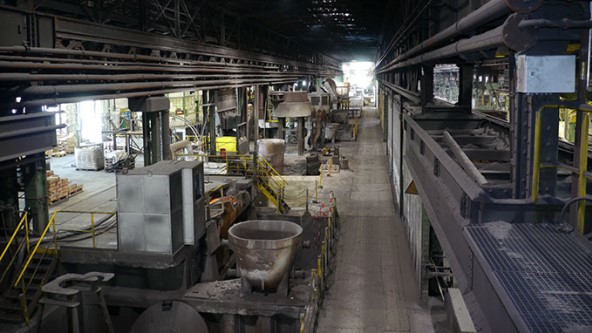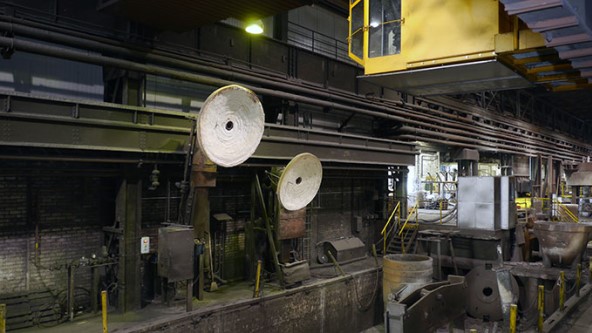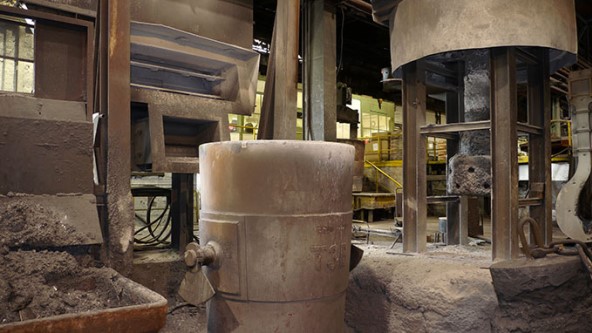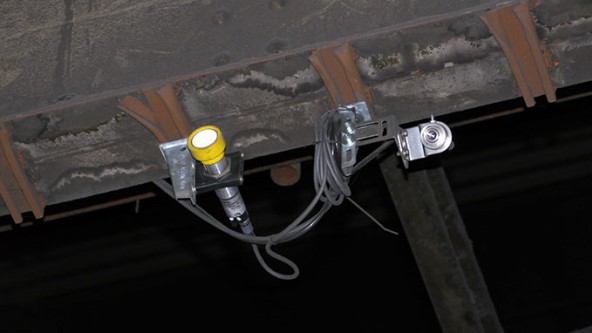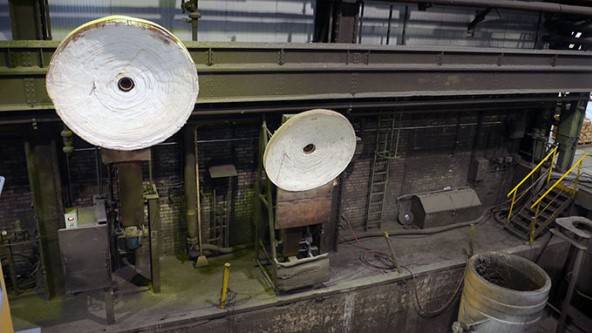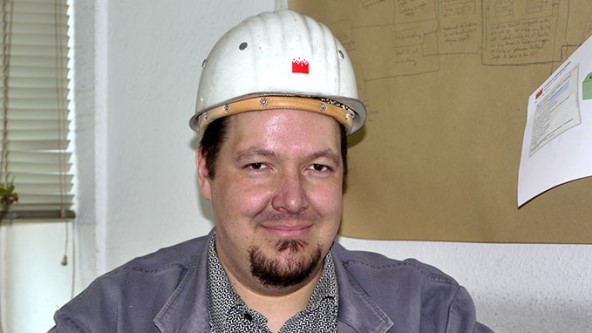Infra-red temperature measurement in iron foundry
Efficient and economical: the iron foundry of Friedrich Wilhelms-Hütte Eisenguss GmbH monitors the preheating of iron ladles with T-Gage infra-red sensors from Turck
It is often the simple solutions that have the greatest effect. The cast iron foundry at the Friedrich Wilhelms-Hütte in Mülheim was able to reduce its annual gas consumption for preheating cast iron ladles by 25 percent – simply by using the right temperature measuring technology from Turck. Instead of using complicated and expensive pyrometer measuring devices to measure the ladle temperature, the solution was based on the infra-red measuring of the ladle exterior.
Energy-intensive iron casting
Steel scrap is melted in induction furnaces and smelted to iron through the addition of carbon. The liquid metal is poured into so-called ladles from the furnaces, transported with a crane and poured into the cast molds. This results in the produced components which weigh several tons. In order to withstand the exposure to the hot liquid iron with a temperature of 1,200 degrees they are lined with fireclay. However, this is only possible if the temperature rise is slow, otherwise the fireclay lining of the ladles would be damaged. The ladles are preheated with gas burners to between 800 and 1,000 degrees before the iron is poured.
Potential savings with ladle heating
The ladles had long been preheated according to empirical values and estimates. This resulted in a monthly consumption of enough natural gas to supply hot water and heating to 50 small families living in 100 square meter apartments for a year. “We saw that we could make considerable savings and looked for a solution that was precisely matched to the casting process and the temperatures of the individual ladles, so that any unnecessary preheating or warming of the ladles is kept to a minimum,” says Guido Günther, plant manager for technical support and smelting.
T-Gage is a low-cost solution
Alternative to an expensive pyrometer measuring, Turck presented a solution using an infrared temperature sensor. Instead of inside the casting ladle, the T-Gage temperature sensor from the Turck portfolio looks at the outside surface of the ladle and measures the temperature there. The accompanying software uses the outer temperature to determine the temperature on the inside surface of the ladle. For each measuring point, the infrared sensors cost around 700 euros less than the corresponding pyrometers.
Interplay between infra-red and ultrasonic
Six M18TIP14Q T-Gage infra-red sensors are installed on the casting line. They are fitted so that the crane with the ladles always moves past one of the sensors prior to use. A Turck ultrasonic sensor (T30UXDBQ8) is also located next to each temperature sensor. This detects the ladle in passing and triggers the temperature measuring process.
25 % less gas consumption each month
The analog signal of the temperature sensors and the switch signal of the adjacent ultrasonic sensors are transmitted using Turck's BL20 fieldbus gateway via Modbus TCP to the host computer at FWH, where it is processed by the production management system. The system knows exactly when a ladle is needed. This optimized process enables FWH to reduce its gas consumption for the heating of ladles by 25 percent just for the iron casting.
- Témata & Technologie
- Bezpečnost strojů
- Brána pro sledování majetku s Cloud ID
- Brána pro sledování majetku se SNAP ID
- Codesys
- Ethernet v Ex prostředí
- IO-Link
- Modulární stroje
- Module Type Package - MTP
- Monitorování stavu
- Multiprotokolový Ethernet
- Pick-to-Light
- Polní logický kontrolér (FLC)
- Profinet
- Průmysl 4.0
- Průmyslový cloud
- RFID
- Snap Signal
- TAS - Platforma služeb IIoT
- Udržitelnost
Select Country
Turck worldwide


